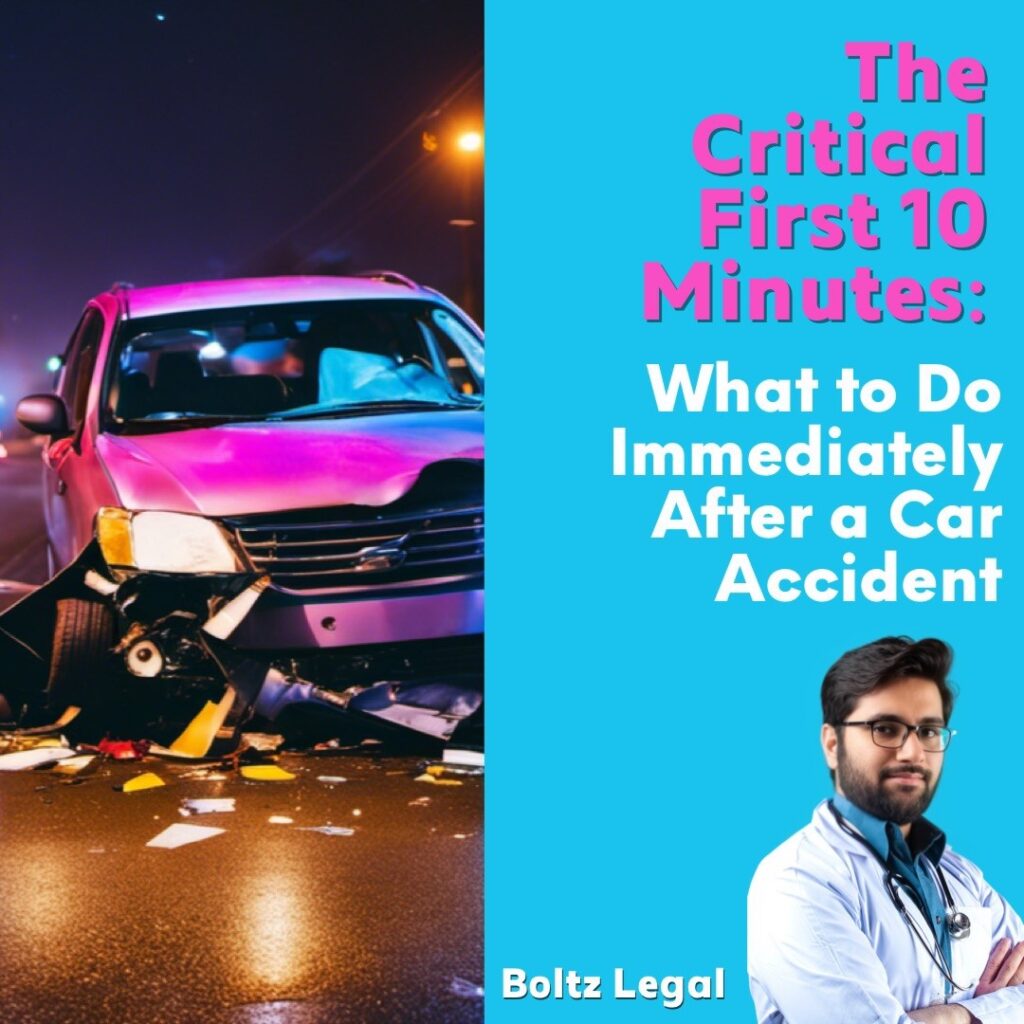Introduction
Accidents are unpredictable and often frightening. What you do in the critical first 10 minutes can significantly impact your safety and the outcome of any insurance claims or legal actions. This guide will walk you through the essential steps immediately after a car accident.
Importance of Staying Calm
Your first instinct may be to panic, but staying as calm as possible is crucial. A clear mind will enable you to assess the situation better and take the necessary actions.
Step 1: Check for Immediate Danger
Upon impact, quickly evaluate your surroundings. Check for immediate threats like fire, smoke, or being in a hazardous spot like the middle of a busy road.
Step 2: Ensure Safety
If it is safe, move your vehicle to the side of the road, away from oncoming traffic. Turn on your hazard lights to alert other drivers of an accident.
Step 3: Assess Injuries
Before you do anything else, check for injuries—both your own and those of any passengers or other parties involved. If severe injuries are apparent, call 911 right away.
Step 4: Call the Authorities
Even for minor accidents, it’s advisable to call the police. They can file an official report, which could be invaluable later if disputes arise.
Step 5: Gather Information
While waiting for the police, gather as much information as you can. Collect names, phone numbers, and insurance details from other drivers. Don’t forget to note down the license plate numbers of all vehicles involved.
Step 6: Seek Witnesses and Security Footage
Start looking for any eyewitnesses. If you find any, ask them what they saw and get their contact information. Additionally, scan the area for any businesses or homes that might have security cameras pointed toward the road. Their footage could serve as vital evidence.
Step 7: Document the Scene
Taking photographs can greatly help your case later. Capture the positions of the cars, any visible damage, and injuries if any. Quick sketches or notes about the chain of events can also be helpful.
Step 8: Notify Insurance
As soon as you can, contact your insurance company to report the accident. They can provide guidance on the next steps and what further information may be needed.
Conclusion
The moments following a car accident are often chaotic and stressful, but your actions during this time are crucial. Prioritize safety and medical assistance. Once those immediate needs are addressed, focus on gathering as much information as possible. Your collected data, from eyewitness accounts to possible security camera footage, will be invaluable when dealing with insurance claims and possible legal actions.

